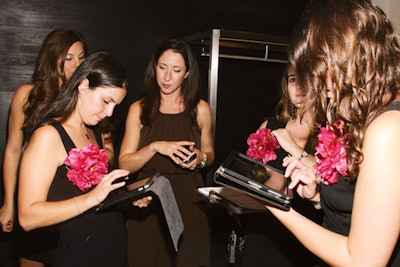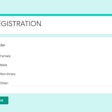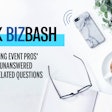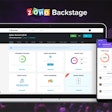
Whether you’re planning a public festival or a corporate conference, event security is paramount. And while personnel continue to play an integral role, there are a number of technology-based products and services—including video surveillance and bar-coded tickets—that can help secure venues and prevent gate-crashers and counterfeits. Here are a few examples of what’s popular now.
To monitor guest access at the door, Scott Jenkins, president and C.E.O. of Jentek Integrated Systems in San Francisco, suggests using security software developed by a company called Stopware. “Depending on the event, we really stress identification to match invitees with attendees,” he says. “Stopware has excellent products for creating and issuing badges.” With the company’s PassagePoint Mobile program, which includes a handheld unit with a magnetic strip reader for scanning and inputting information from driver’s licenses, a security officer can greet visitors, swipe their identification, and print badges on the spot.
Issuing bar-coded tickets is also an effective way to prevent counterfeits, says Ken Choi, account manager at Toronto-based online ticketing company Get Tickets. The company has a software program that enables planners to sell bar-coded tickets online that guests can print at home. “We have hardware scanners at the door to verify the tickets’ authenticity. Our scanners can detect if a ticket has already been scanned. And because of the bar code on a soft ticket, not a lot of people attempt to counterfeit them. We’ve seen people try to Photoshop their name onto tickets, but the bottom line is the bar code.”
Social media sites like Twitter can also be helpful when it comes to monitoring an event, says Michael Wachs, president and founder of Royale Security in New York. “In this day and age, obviously, when you’re talking about the high-profile events that we do, people think about every which way to get in,” Wachs says. “A lot of times, leaks are found on the Web. We have a team dedicated to scouring the Internet—PR companies, databases, media outlets—making sure the location of the event itself isn’t leaked. We don’t want that information out in the public. Even during the event, the team monitors tweets going out from attendees so they can advise security on site what the word is going out.”
Barry Meyerson, president of New York-based security firm Meyerson Associates Inc., says the iPad is affecting the way planners and security teams guard against gate-crashers. Instead of using clipboards at check-in, the device allows staff to connect wirelessly, eliminating the possibility of two people attempting to use the same name at different doors.
For a recent product showcase at the San Jose Auditorium held by a tech company based in Silicon Valley, Jentek employed a combination of technology-based programs.
“Internally, they set up small showrooms of 500 square feet where they were showcasing products they were planning to roll out,” he says. “We used mobile infrared security, panic alarms, and covert cameras. Everything was wireless. We did not link into the security system of the auditorium,” Jenkins says.
Jentek used a closed-circuit television software program developed by On-Net Surveillance Systems Inc., in conjunction with DigitalWatchdog Cameras, to monitor the venue wirelessly. “We look a lot at cameras. I like cameras more than I like human beings because they fail very rarely,” Jenkins says.
Yet even with the advent of such new developments, Meyerson maintains that trained security personnel remain the most important factor. “Highly trained, observant security agents—along with technology—is tremendous,” he says. “I think the technology alone isn’t sufficient. With the two of them, one plus one equals three.”



















